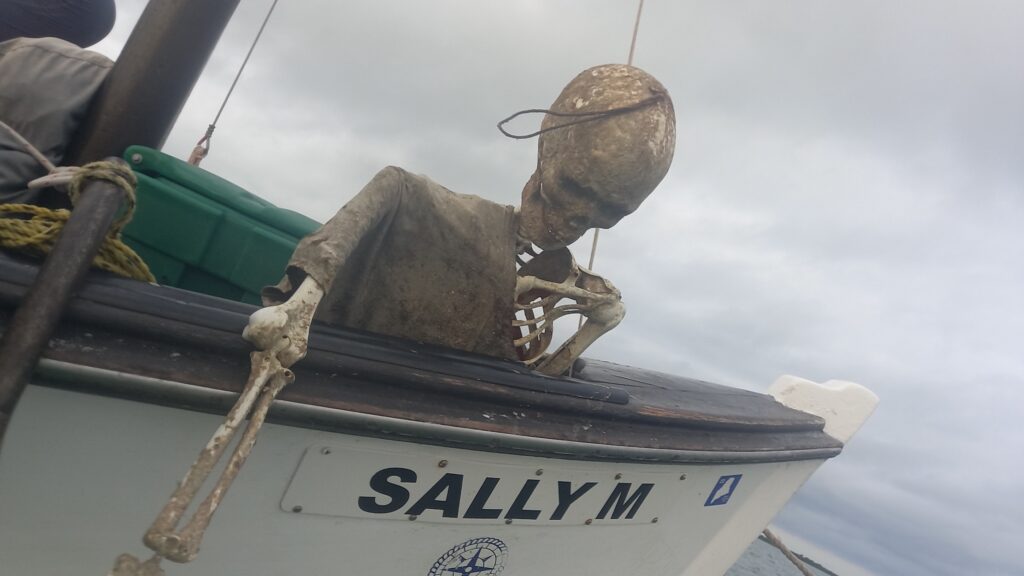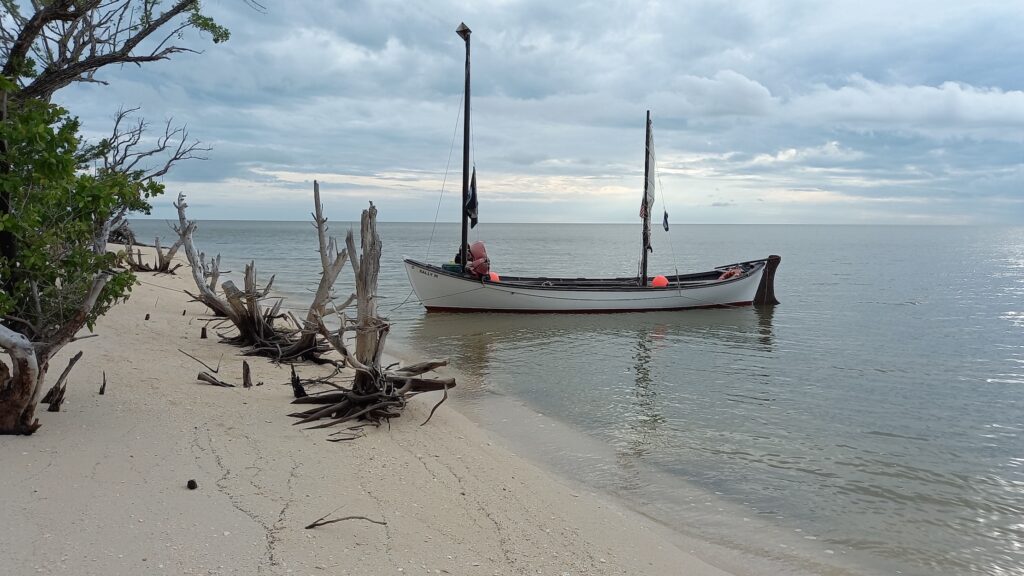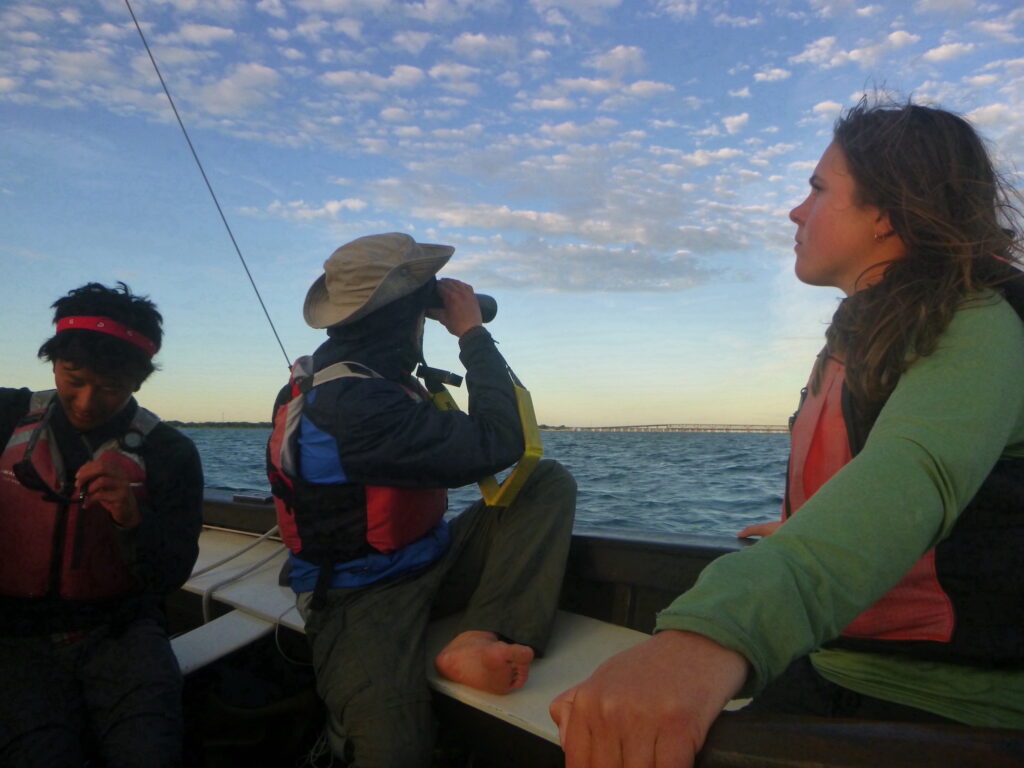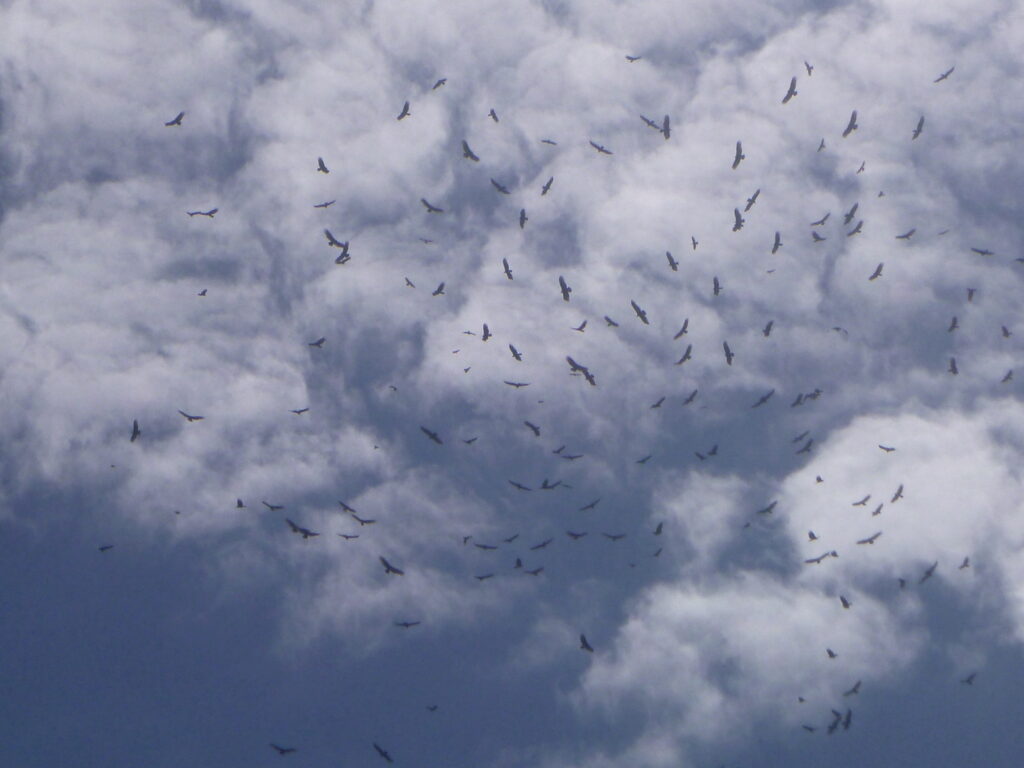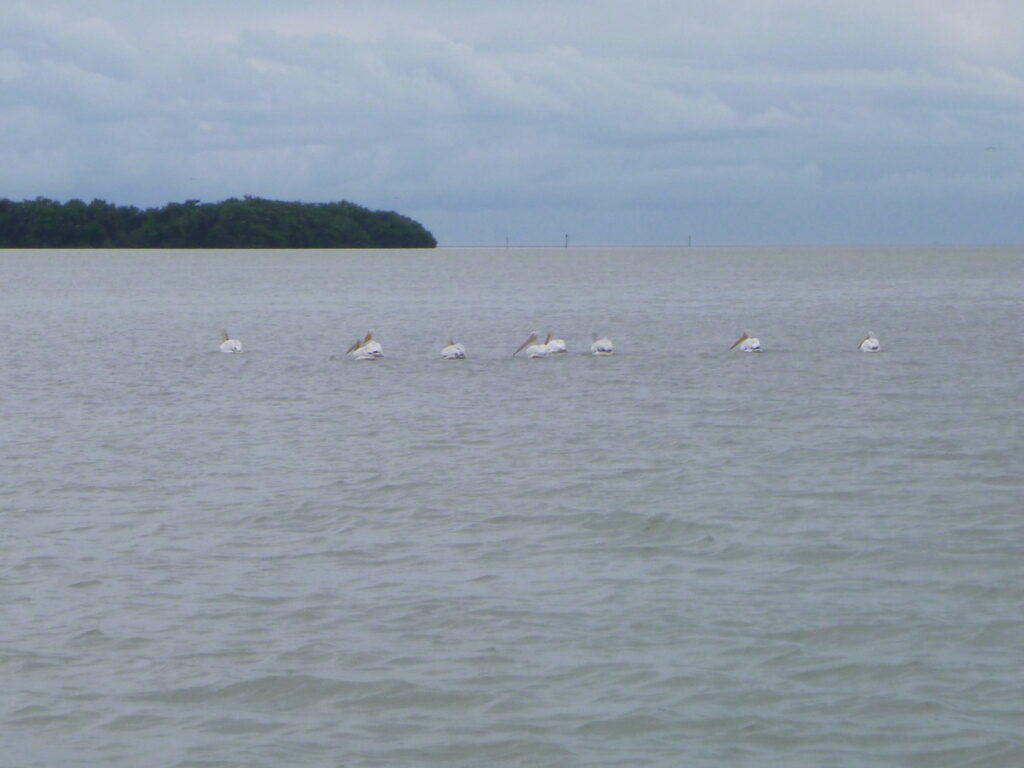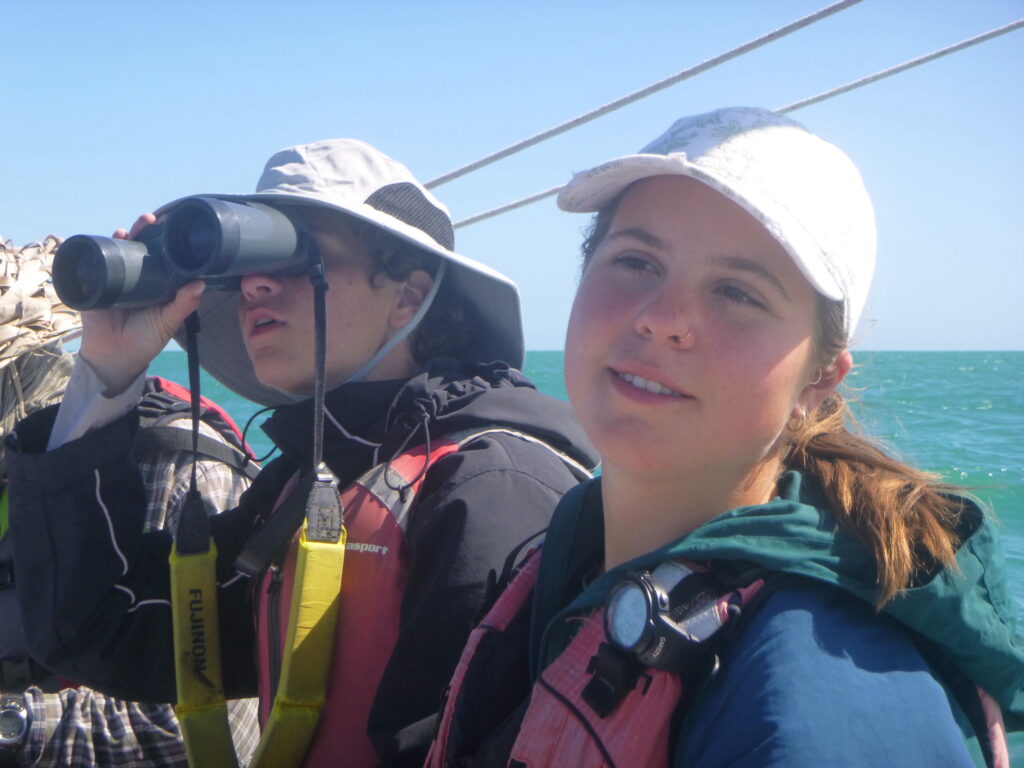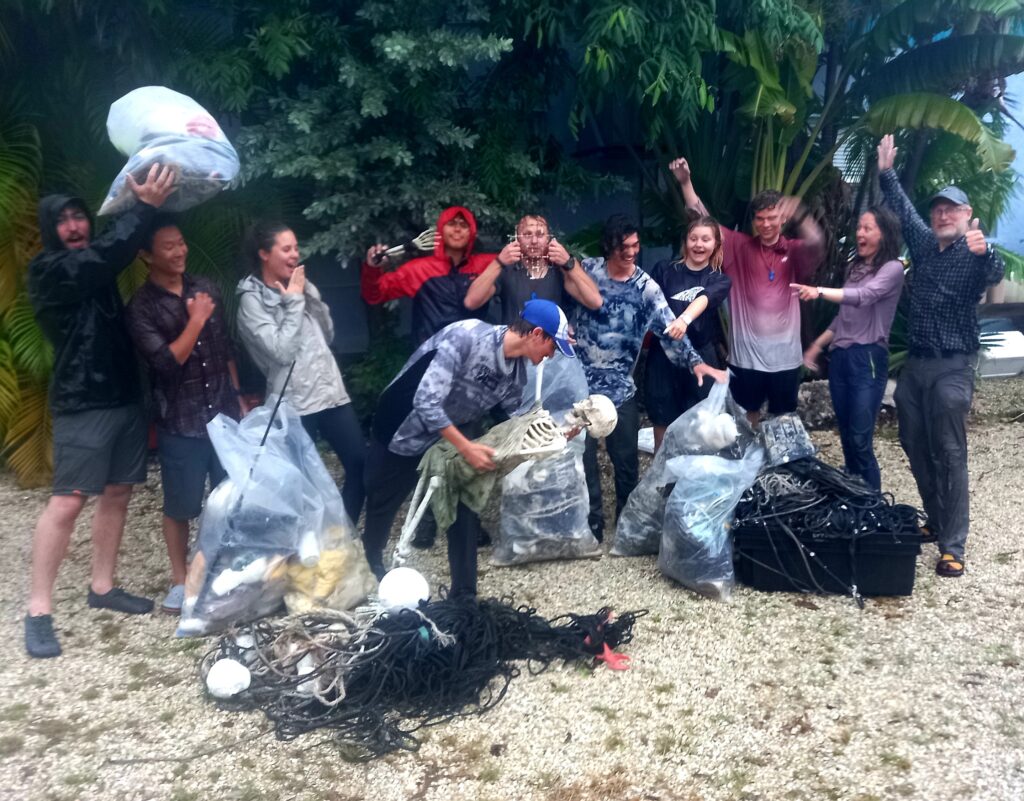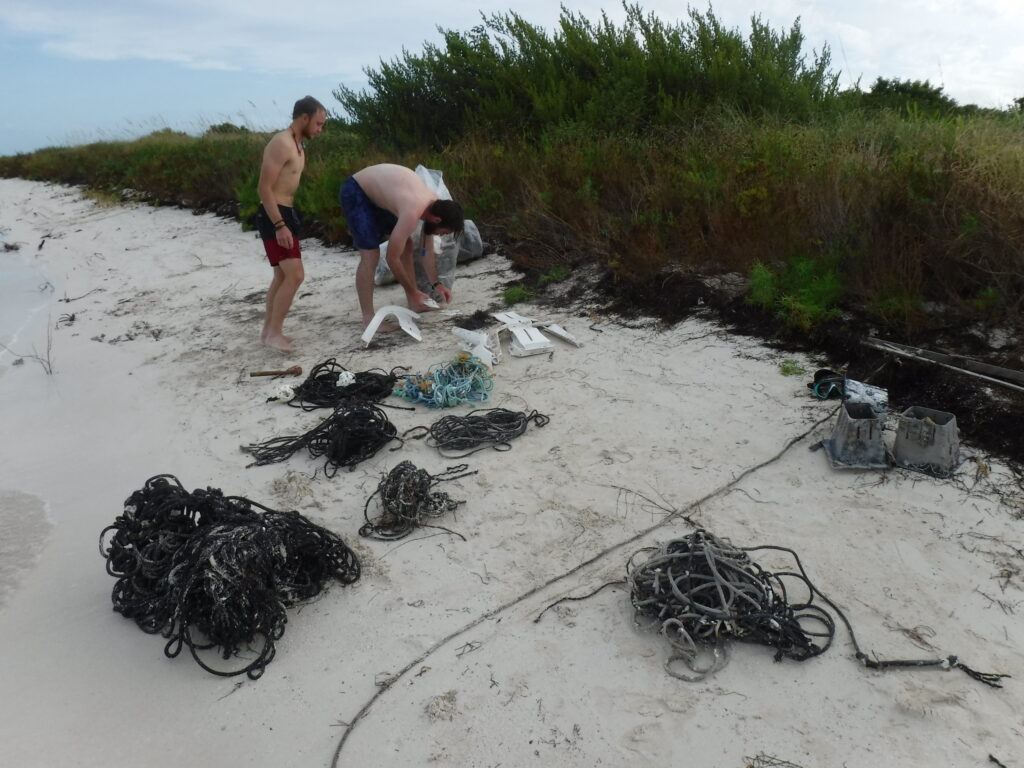Written by HIOBS Instructors Morgan Hinson and John “Sockeye” Calogero
During the most recent fall semester in the Keys, students had the opportunity to meet a local wildlife biologist, Suzy Roebling. This connection prompted discussions about how the environment that we were sailing through had and would change because of rising sea levels. Birds that nest or spend seasons in the Keys are particularly sensitive to these changes because many of them live at the fragile interface between sea and land. Fortunately, for the sake of education, birds are one of the easiest types of wildlife to observe from a pulling boat.
As we traveled, the students logged sightings of birds. They diligently wrote down species, behaviors, estimated numbers, and tied them all to coordinates and times. Students would pass binoculars around, and yell different features or patterns of a bird to a peer with a bird book. Once the species was determined, another would often count the total number of birds or use a chart to determine our position at the time of the sighting. At times, it required as much as half of the crew to keep track of the birds around us.
Sightings ranged from an individual to tens or even hundreds of a single species. Students quickly learned how to differentiate the flight of a group of Brown Pelicans from White Pelicans and that a flash of pink in the shallows was likely a Roseate Spoonbill feeding. The most impressive sightings happened at remote keys in Everglades National Park and in the Marquesas Keys, which are part of the Key West National Wildlife Refuge. After the students left, our logs and observations were sent to local and national organizations that monitor birds in the Florida Keys.
Taking on a service project or two is an important element of an Outward Bound course. Helping people directly is challenging for sailing courses with varying schedules due to the weather. Yet, there are ways to make a difference that do not require scheduled meetings with people outside the course, which for this semester program was especially helpful to maintain a COVID free crew.
In addition to recording bird sightings the students collected marine debris. Frequently, while underway, they found plastic bottles afloat, which offered opportunities for impromptu crew overboard drills. Rope lost from the commercial crabbing and lobstering industry was found tangled in the mangroves ringing the keys. More debris of all sorts was found on beaches in Everglades National Park and in the Marquesas Keys. The final bit of plastic extracted from the sea was Randy, the name the students gave to the plastic skeleton found submerged near an informal navigational marker in the Lower Keys backcountry. While it was uncertain at first, there was some relief when the skeleton was determined to not be real. The students could only guess and develop stories of how Randy ended up there. Randy was a great final find and the only plastic which did not get put into the garbage bins.
